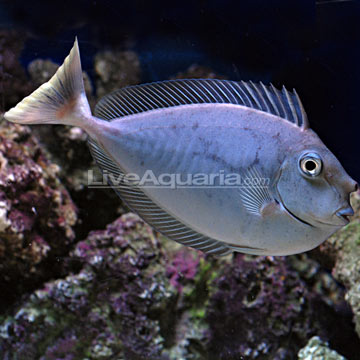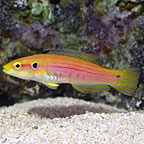
Additional locales and sizes may be available!
Additional locales and sizes may be available! Email me when availableQuick Stats
What do these Quick Stats mean? Click here for more information
What do these Quick Stats mean? Click here for more information
Overview
The Blue Unicorn Tang, also known as the Spotted Unicornfish, originates from the pristine waters surrounding Hawaii. They are silver as a juvenile, and with age, gradually darken into a beautiful black and blue coloration. Their shape also changes from being oval as a juvenile, to a long, bullet-like shape as an adult. These tangs also develop a long horn on the nose when they enter adulthood.
A 360 gallon or larger aquarium with plenty of live rock is necessary to provide plenty of swimming room and places to hide. It is aggressive towards its own species, but peaceful with other fish.
Although Tangs will eat meaty foods along with the other fish in the aquarium, it is important that they are offered plenty of marine based seaweed and algae. This will strengthen their immune system, reduce aggression and improve their overall health. Offer dried seaweed tied to a rock or use a veggie clip, and feed at least 3 times per week. Sea Veggies, Seaweed Salad and Ocean Nutrition are all ideal products and are very easy to use.
Approximate Purchase Size: Small: 1" to 3"; Medium: 3" to 5"; Large: 5" to 8"







